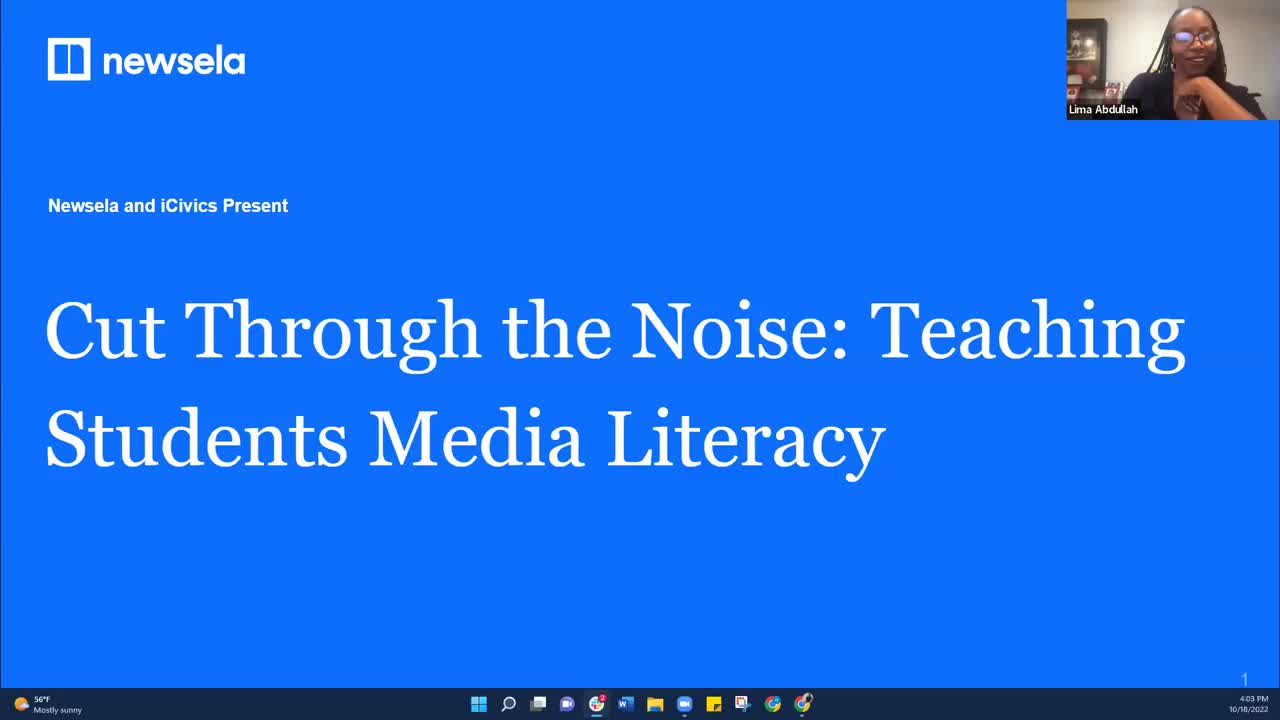Webinar Recap: Cut Through the Noise With Media Literacy
If you’ve ever had a student bring something up in class that they saw on TikTok, read on the internet, or heard through the rumor mill, you know that young people tend to have a hard time differentiating between verified information and unvetted gossip. Let’s be honest, the current media landscape doesn’t make it easy. Advertisements can be made to look like news articles, trusted celebrities can push conspiracies. That’s why it’s critical that students learn to investigate content they’re consuming. Teaching media literacy, from a young age, can help.
Newsela’s Lima Abdullah sat down with iCivics’ Chief Education Officer Emma Humphries and Fayette County Public School’s Aaron Davis, a K-12 social studies instructional specialist, to talk about the importance of media literacy in a webinar entitled “Cut Through the Noise: Teaching Students Media Literacy.” Below is a recap of the webinar that dove into why media literacy is so important, strategies for teaching it in the classroom, and how instructional materials can help support classroom discussions.

Why now?
Lima kicked off the conversation with a question of timeliness - why is it important for teachers to practice media literacy skills now? Emma says media literacy is “always critical, it’s always timely, but it feels like the stakes are a lot higher, in terms of the health and maintenance of our democracy, during an election season.” The changing media landscape has made teaching students to decipher fact from misinformation more difficult in recent years, especially with the lightning growth of social media.
“Snapchat and TikTok are tailored to that short attention span of adolescents,” Aaron Davis of Fayette County Public Schools added. “They’re getting bombarded with information in 10- to 30-second nuggets.” These new ways of consuming information are challenging students’ ability to engage with a source when the material becomes difficult or uninteresting to them, and they tend to take the information they learn on social media at face value.
How early should we be teaching media literacy?
Aaron’s answer was simple: “How early do you expect students to be using technology and accessing media?” That’s when they should start learning about media literacy.
Examples of media literacy look different in elementary, middle, and high school classrooms. In elementary school, teachers should focus on teaching the fundamentals of how to use the technology properly, with many guardrails around the sources students have access to. In middle school, he suggests, some of those guardrails can start to come down. By high school students should be able to navigate all types of media sources, equipped with the critical thinking skills needed to determine credible sources.
What strategies should we use to teach media literacy?
Emma suggests appealing to students’ egos. Pull up a benign article in class and model the thought processes students might take when sharing something on social media to emphasize the importance of checking sources. Ask the class: Should I post this? Am I sure it’s factual? What if it’s untrue and one of my friends calls me out for posting it? What if posting this, without fact-checking, makes me look stupid?
Then, Aaron explains, walk through some steps to help teach students how to investigate an article.
- Sourcing: Who wrote it? What reasons are they writing it?
- Contextualizing: When was it written? What was going on in history at the time? What was happening in the world?
- Corroborating: Find sources about the same thing, from different and similar points of view, and compare and contrast them. What are the similarities and differences?
- Close reading: Provide students with supportive text features–like leveled texts on Newsela–to help navigate thinking processes.
As Emma said, “there’s teaching of the skill, and then there’s repeated practice to make it muscle memory.” These questions and strategies can be taught explicitly, but for repeated practice it’s best to weave media literacy “moments” into any lesson, she explains. Even just comparing two headlines from different news sources can help students see how the same event can be described in two different ways. This practice can be woven into any lesson in any subject.
Kickstart media literacy instruction at your school
You can boost media literacy instruction in the classroom in lessons you've already planned. Learn more about Newsela Essentials, which provides access to thousands of news and current events articles to help students determine fact from fiction when evaluating the credibility of media sources.